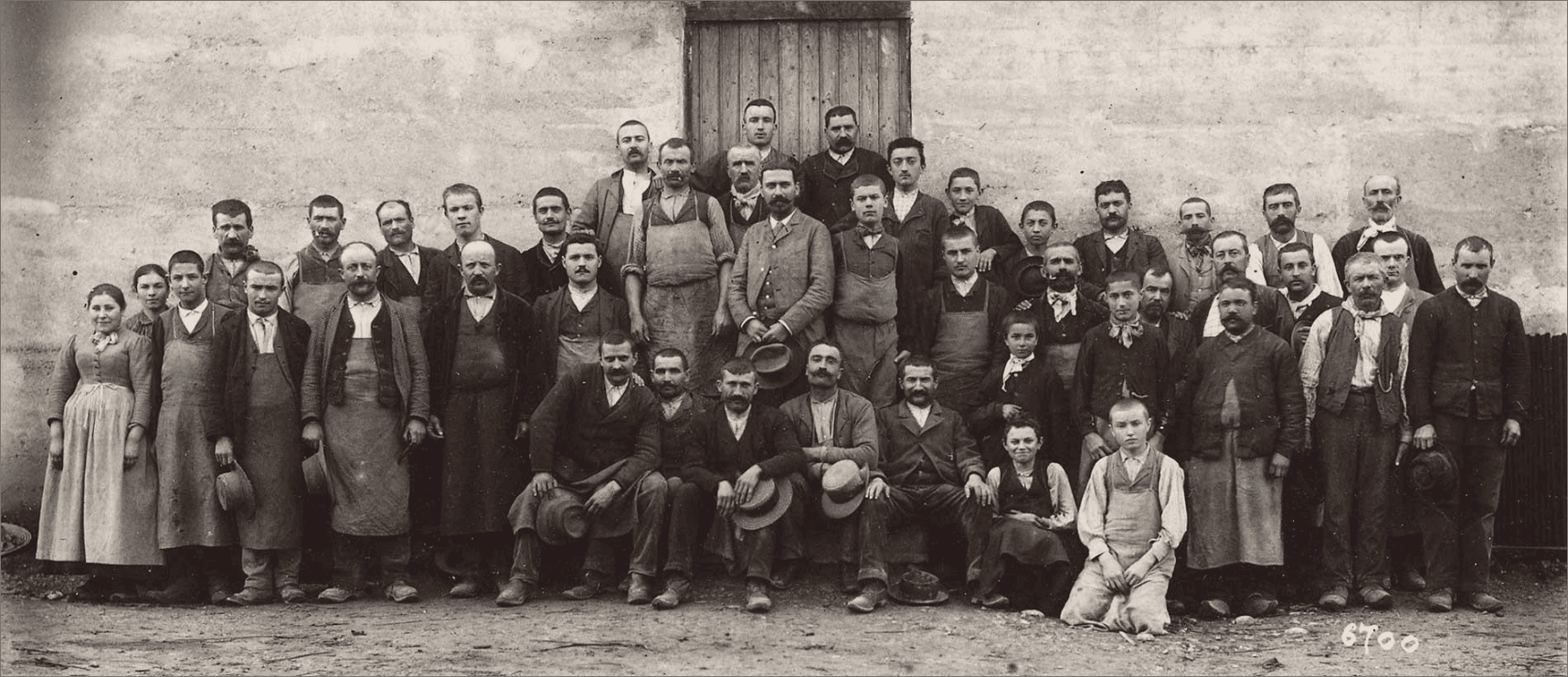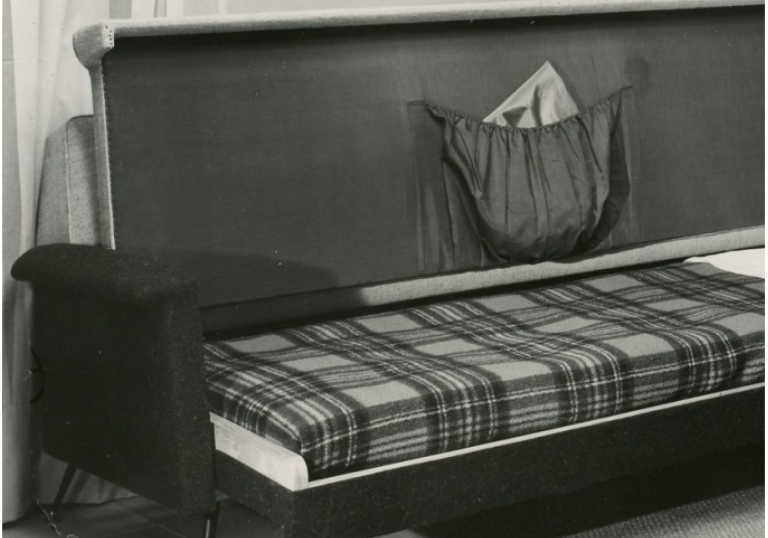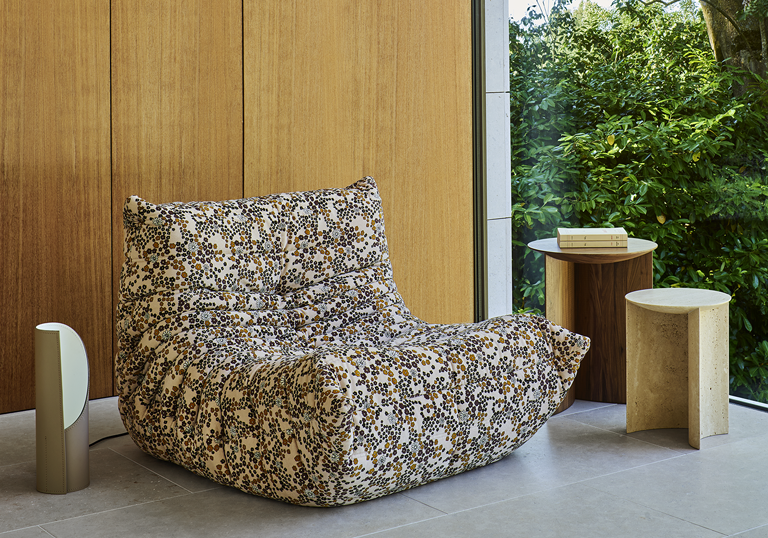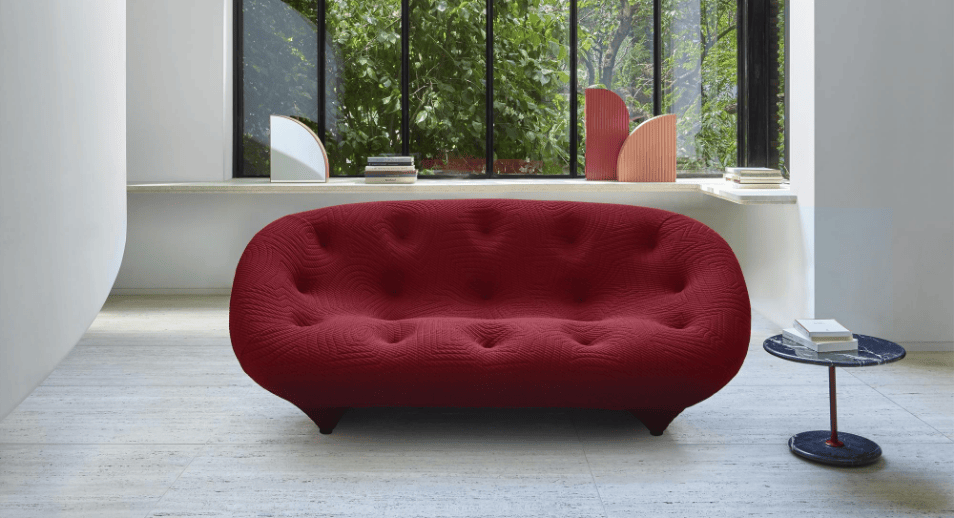Product total
$0.00
Shipping : Continue to next step
Total (tax incl.)
$0.00

As per the most beautiful and legendary luxury brands, the history of Ligne Roset is rooted in the French craft heritage. Antoine Roset (1841-1893), great-grandfather of the current directors Pierre and Michel Roset, is the first of the line. A waiter from Cruseilles in Haute-Savoie, attracted by the magnificent beech forests of Bugey, he decided to try his luck at the age of 19 by settling in Oussiat near Pont d'Ain where in 1860 he set up a small factory for canes for parasols. To develop his business, he bought a property in Montagnieu (Ain) in 1892 and installed water wheels on the Brivaz river to cut his wood. He was then employing about thirty employees. But, at the end of the 19th century, women abandoned the parasol. As a result, Antoine Roset decided to convert his wood lathes to design chair legs and frames and quickly moved on to manufacturing complete chairs: a sign of fate!
At his death in 1893, his wife, Marie-Victorine (1854-1923) succeeded to her husband at the head of the family business before handing over the reins in the 1910s to their son Emile Roset (1882-1946).
Until the 1930s, the "Etablissements Veuve A. Roset" manufactured colonnaded chairs, caned and style seats. In 1936, Roset produced its first upholstered seats, mainly in leather.


Emile Roset tragically died in 1946 in a road accident. His son Jean Roset (1920-1999), Antoine's grandson adapted and in the context of post-war reconstruction, he quickly shifted the focus of the company (which then had around fifty employees) to contract furniture. This is the golden age of public procurement. Roset manufactures modern Scandinavian-inspired furniture for a variety of institutions, including colleges, high schools, universities, hospitals and retirement homes. While the material of choice remains beech, inexpensive and easy to machine, Roset also uses precious woods such as mahogany or rosewood and innovates by combining metal and even plastic. Roset furnishes the universities in Paris, Grenoble, Chambéry…, the lecture halls of INSA Lyon, and even the campus of Antony near Paris which welcomes the first students couples. Beds, chairs, tables... the design was already done in collaboration with architects and the "contract business" remained very buoyant until the 1960s. Transformed into a public limited company in 1956, the Roset company was truly born in 1965.

Jean Roset sees, in the explosion of creativity of the 70s, the timely opportunity to revitalise his company by redirecting the activity towards the domestic market. Fascinated by the contemporary, he began to work with interior architects and designers, such as Michel Ducaroy, creator in 1973 of the Togo sofa, a timeless iconic piece which sold more than 1.2 million units. Claire Brétécher would illustrate many drawings of her “Frustrés” wallowing in the Togo… Roset is then perceived as an unconventional, even subversive brand. Jacques Séguéla also signed an advertising campaign for the brand with a woman sitting cross-legged on a Roset sofa, shelling peas: the image of the modern housewife. 1973 is a decisive year since it is also when Ligne Roset became an official brand. Investing in creation will be the first insight that will lead the company to success. Today, Ligne Roset collaborates with more than 70 designers from all over the world and all backgrounds, new talents out of school or confirmed world stars. The second insight? The ambition to make Ligne Roset a real brand, with a distribution network in its own name. A real innovation in the furniture market of the time! The first stores under the Ligne Roset brand will open from 1973. Export will be the third founding and pioneering instinct with the first establishment in Germany in 1967. Today, its international presence represents 60% of the total activity.
In 150 years, the Ligne Roset brand has become the symbol of an elegance of life, synonymous with modern luxury, known for its artful collaborations with both established and up-and-coming talents in contemporary design. The brand offers consumers an entire lifestyle in which to live both boldly and beautifully via its furniture collections and complimentary decorative accessories like lighting, rugs, textiles and occasional items. A world apart, where certain products, such as the Togo, now belong to the legend of 20th century design. At Ligne Roset, open-mindedness is a business strategy, creativity a philosophy, non-conformism a policy, intellectual curiosity a character trait. For Michel Roset, industry and culture can go hand in hand: “A Ligne Roset chair or piece of furniture is always more than wood and foam. The stars of contemporary design have understood this very well, from the Bouroullec brothers (Facett chairs) to Pierre Paulin, who chose the French company to manufacture his latest creations (Anneau armchair, etc.), to reissue his CM 141 desk, his TV chair, or to produce for the first time for the domestic market the Pumpkin seats, directly inspired by those designed in 1971 for the Elysée Palace under Georges Pompidou.